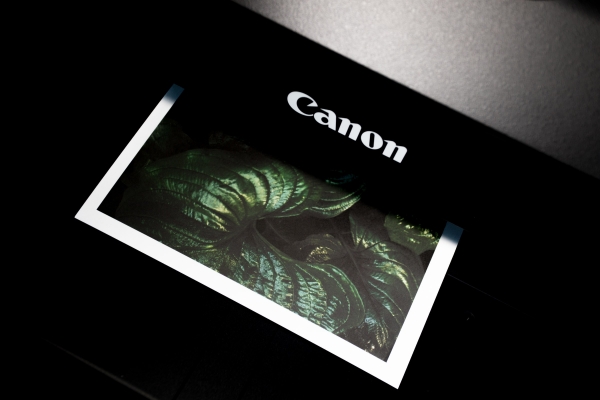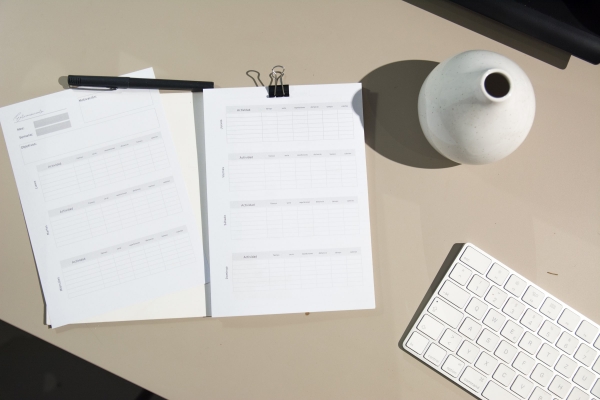Are white lines forming an unbreakable barrier between you and the perfect prints? Do they leave unappealing marks on all your hard copies? A common printing issue that people face while using inkjet printers consists of white lines which are horizontally etched through pages. Blank stretches are present throughout texts, images, or data, creating an extremely unappealing look. If you face the same difficulty while getting your prints, do not stress out too much. We will teach you how to fix white lines when printing; in return, all you need to do is stick around till the end! And get the solution to the most frequently faced office and home printing issues.
Why Does My Printer Print White Lines?
Inkjet printers utilize solvent, or eco-solvent inks sprayed onto the paper’s surface using print heads. These print heads consist of many tiny nozzles through which the liquid ink can be sprinkled out as demanded by the user’s print command.
As inkjet printers have inks that are always quick to dry up, users are often faced with occurrences where the liquid ink hardens within the nozzles. Unfortunately, this means that moving forward; the print heads will be unable to squeeze the ink droplets onto particular areas properly.
As the print heads are clogged, the sections dedicated to those print heads will receive no ink dots. Moreover, since the pages are horizontally rolled into the printers, the blank sections align to create horizontal white lines, giving us an unattractive look that we all despise.

How To Fix White Lines When Printing
You can follow three steps to ensure that the filthy white lines are completely eliminated from your prints. Sometimes only following the first will let you achieve positive results whereas other times, you will need to carry on till the third. Here is what you can do:
Step One: Ordering Cleaning Programs on the Printer
These days, all printers come will an innovative nozzle check technology that lets the printer cleanse its print heads by itself. To enable this command, follow these steps:
- Click on the printer’s Start button and then press down on the Settings icon that appears.
- Search for the Printers & Scanners tab in the settings, and then right-click on the name to access the list of hardware connected to your computer.
- In the software utility, you will stumble upon many self-servicing options for your printer. Click on the one that says ‘Head Cleaning’ and wait for the blockages in the nozzles to be removed.
- Once this is done, go back to the software utility and click on the ‘Nozzle Test’ option. If the result still holds blank white lines, do not hesitate to press the ‘Printer Head Deep Cleaning’ button!
Some printers come with their touch screens or navigation buttons where you can access the settings option. If you are the user of such a printer, instead of fidgeting with your computers, use the screen to order cleaning commands, as it is bound to be a lot easier.
After following this step, if your printer is still unable to produce perfect prints, do not keep on executing print head cleaning commands! Doing this consecutively will only result in worse blockages that are harder to handle.
Step Two: Cleaning the Ink Cartridges By Hand
If the printer is unable to clear the nozzles by itself, you need to start getting your hands dirty.
- Remove the printer’s trays and uncover the lid to put the interiors on display.
- After uncovering the printer’s lid, the cartridges will move by themselves to the front portion and grab a quick halt. Take this as your cue to detach the cartridges one by one. Again, be gentle while preventing yourself from causing damage to the delicate body.
- Observe each of the cartridges very carefully. If any cracks or leaks meet your eye, immediately replace the cartridge with a new or fault-free one.
- When a cartridge seems to have no visible cracks, the nozzles need to be cleaned to remove the dried ink remains. To do this, dip a cotton swab in rubbing alcohol and lightly dab the mouths of the nozzles. Slowly, the rubbing alcohol will break down the hardened parts and let the nozzles respray ink.
Once you have done this, take a moment to shake the ink cartridges too softly. This will cause all dried-up ink traces to fall off the cartridge walls, letting you print without further hindrances.

Step Three: Altering the Printer Settings
If your printer is still unable to get you the proper prints, then there must be something wrong with the print settings that you are using. To make the necessary changes, go through these steps:
- Open the file you want to print on your computer and click on the Print button.
- As the Print dialogue box appears, you will find many settings options. Look into all the available options and alter each according to the paper you use. Check the Paper Types stated and if you are unable to find the one you are using, opt for a finish that is somewhat close to your paper’s coating. If something like Print Type appears, choose based on your file – text or photo.
- If you are done making all the necessary alterations, click on the Print button present at the bottom right corner of your dialogue box. Check out the results, and your white lines will most likely have disappeared by now.
At times, you will notice that your printer is unable to print without creating white lines even after following all three steps. If this is the case, you will need to hire a professional who will give it a maintenance check.
It would help if you also remembered that blank or black lines could be an indicator of depleted cartridges. So, installing new ones or getting an ink refill might end up being the answer to your printing issue!
How Do I Prevent Lines From Happening?
Prevention is better than cure – so what can you do to avoid those awful white lines altogether?
As stated before, this printing issue is usually rooted in damage caused to the print heads or ink tanks. So, to steer miles away from it, always treat the ink cartridges gently and with a lot of care. Attaching and detaching should always be done without applying too much pressure, and the cleaning should not create any scratches or cracks on the surface.
In addition to this, people who refill cartridges instead of replacing them should not use the same tank for too long. After two or three refills, you should always switch the cartridges out for new ones. This is because layers of deposits building up with time are hard to remove. Also, the mouths of nozzles have a hard time receiving ink, causing them to miss spraying on certain sections of your prints.
Lastly, ink cartridges are not meant to be shaken violently as otherwise, the interiors will get damaged in an instant. Instead, a light tumble will help you break down the most hardened ink particles.

How Do I Fix The White Lines On My HP Printer?
- On your smartphone, open the HP Smart App. From the home page, fish out the Settings menu and click on it to get a huge list of options.
- Head to the software utility panel and then surf the choices until you see the ‘Clean Print Head’ tag.
- Click on the ‘Clean Print Head’ and then wait for seconds until the touch screen shows that the task is completed.
- Now, go next to your printer and feed some pages into its paper tray.
- These days, most HP printers will have a control panel present on their body. On it, you will notice a Cancel button or icon (if a touchscreen is present). Press down on it until you notice that your printer has started printing out a test page.
- Grab a look to see whether the test page is free of white lines. If not, check the ink levels mentioned on the test print. It is very likely that your ink’s life span is coming to an end, meaning that you should carry out a refill.
How Do I Fix Horizontal Lines When Printing?
Black or white horizontal lines always take the crown for being the lead printing issues amongst home and office users. The former is usually caused when the printer is about to run out of ink, whereas the latter is mostly a sign of clogged nozzles.
To remove horizontal lines from your printing equation, we suggest that you first take your printer’s lid off. Now, wait for the cartridges to go back to their original position and then start detaching them. Most cartridges have tabs that can be switched down to allow safe and effortless removal.
After getting the cartridges in your hand, give it the slowest shake in order to push the hardened parts into loosening up. Next, grab some rubbing alcohol, and with the assistance of a cotton swab or small piece of cotton cloth, wipe the cartridge’s mouth clean.
It would help if you now placed the cartridges back into their original position as everything is done. Make sure they are properly fitted, and then cover the printer with its lid once again before ordering a test print. The horizontal lines will have disappeared by now.
By any chance, if the lines remain, you should take your printer to the local printer technician. They will assist you in fixing any interior technology that is messed up.
Extra Tips For Fixing Your Printed Faded Documents
When a printer’s cartridge starts running out of ink, the documents come out looking very faded and dull. The best way to get rid of this problem is by eliminating the depleted cartridge and installing new ones. If you are looking for a more budget-friendly option, try refilling with third-party inks that you can find at a significantly lower price.
However, if you are short of time and cannot visit a store to buy inks or cartridges, then you might as well try shaking the cartridges a little. This will cause all the ink particles settled on the cartridge’s wall to fall into the center, letting you get a few more proper prints.
While doing this, check to make sure that the imaging drum is also properly cleaned. You can use a light piece of cotton cloth to do this, and be careful about not applying any pressure!



